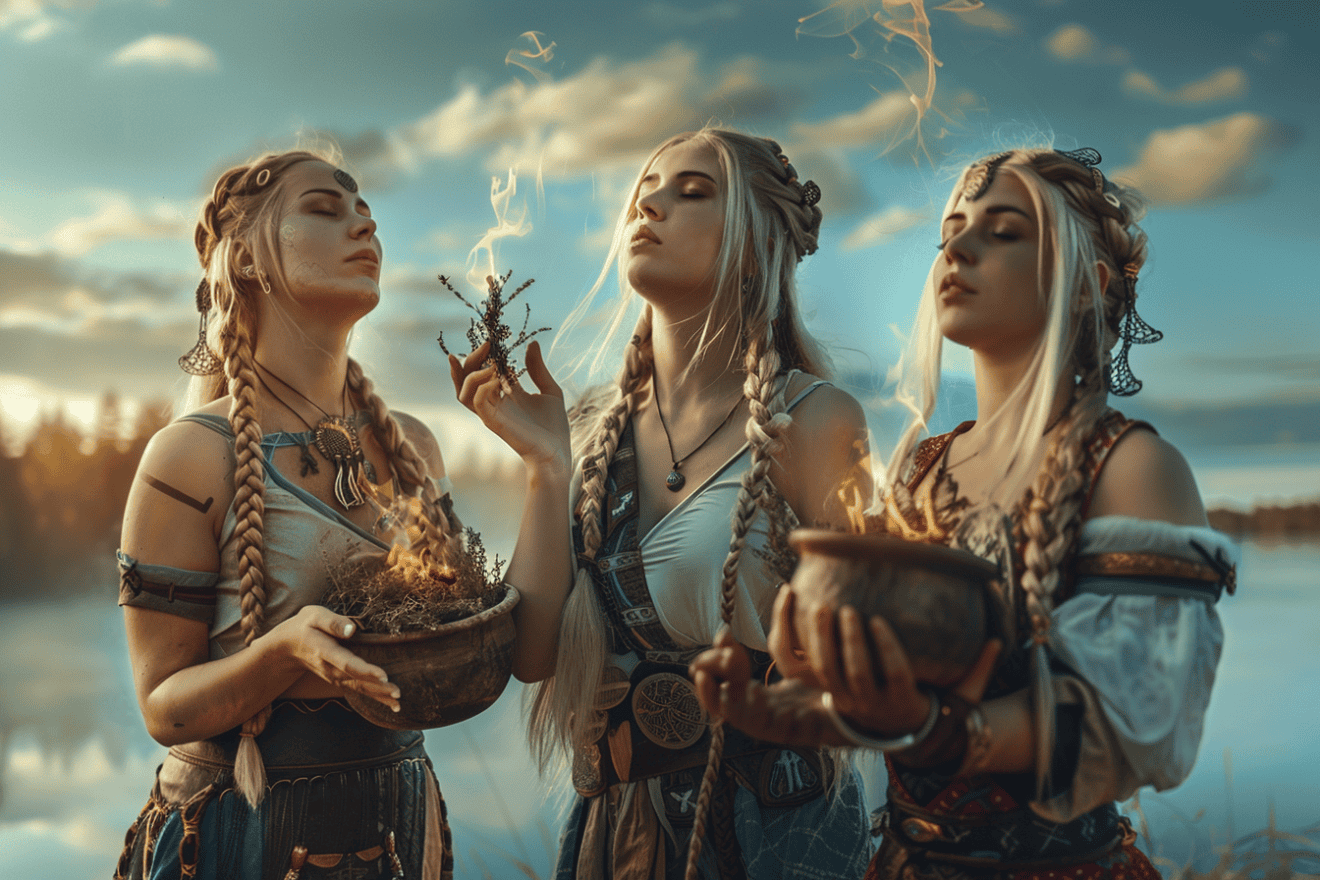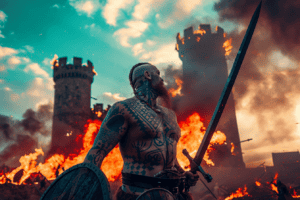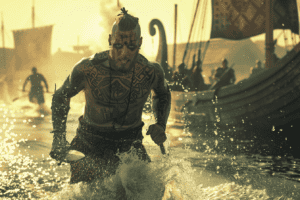The Viking Age is often associated with fierce warriors and brutal raids, but there is much more to the story. Women played a crucial role in Norse society, and their contributions to spirituality and healing practices are often overlooked.
In this article, we will take an in-depth look at the spiritual sisters of the North, the Viking women who practiced seidr, a form of magic and spirituality.

Seidr was a complex practice that involved divination, healing, and communication with the spirit world. Women known as völvas or seiðkonur were the primary practitioners of seidr, and they held a respected and influential position in Viking society.
They were consulted for guidance, protection, and healing, and their abilities were seen as a gift from the gods.
Despite their important role, the spiritual sisters of the North faced challenges and stigma. The practice of seidr was sometimes seen as unmanly, and women who practiced it were sometimes accused of witchcraft.
However, the völvas and seiðkonur persisted in their practice, and their legacy lives on today in the form of modern Nordic pagan traditions.
Historical Context of Viking Women

Roles and Responsibilities
Women in Viking society had a significant role in their communities. They were responsible for maintaining the home, raising children, and managing the household.
Women were also involved in textile production, which was an important industry at the time. They would spin wool, weave fabrics, and make clothing for their families.
In addition, some women were involved in farming and animal husbandry. They would help with planting and harvesting crops, as well as taking care of livestock.
Women also played an important role in trade, as they would often be responsible for selling goods at markets.
Religious Beliefs and Practices
Viking women had a strong connection to their spiritual beliefs and practices. They believed in a complex system of gods and goddesses, and often made offerings to them in the form of sacrifices.
Women were also involved in divination, which was the practice of predicting the future through various means, such as reading runes or interpreting dreams.
One goddess that was particularly important to Viking women was Freyja. She was the goddess of love, fertility, and war, and was often associated with feminine power.
Women would often pray to her for help with matters related to love and fertility.
Another important aspect of Viking spirituality was the concept of the afterlife. Women believed that if they lived a good life, they would be rewarded in the afterlife by being taken to Valhalla, a hall in Asgard where they would be able to fight and feast alongside the gods.
Spiritual and Healing Practices

Viking women had a deep connection with the spiritual world and believed in the power of rituals, ceremonies, and prayer to heal their bodies and minds.
They believed that the spirit was an essential part of their health and well-being, and they used various techniques to maintain a balance between their physical and spiritual selves.
Rituals and Ceremonies
Rituals and ceremonies played a significant role in Viking women’s spiritual and healing practices. These ceremonies were usually held during important life events, such as births, marriages, and deaths.
They were also held during the changing seasons to honor the natural world and its cycles.
One of the most common rituals was the Blot, which was a sacrifice to the gods. The women would offer food and drink to the gods in exchange for their blessings and protection.
Another important ceremony was the Seidr, which was a form of shamanism that involved communicating with the spirit world.
Use of Symbols and Prayer
Viking women used various symbols and prayer to connect with the spiritual world and seek guidance and protection.
They believed that these symbols had the power to influence the natural world and the gods. The most common symbol was the Valknut, which was a knot of three interlocking triangles that represented the connection between the gods, the living, and the dead.
Prayer was an essential part of Viking women’s spiritual practice. They believed that prayer could heal the body and mind and bring joy and faith into their lives.
They would often recite prayers during rituals and ceremonies or in private to connect with the gods and seek their guidance.
Connection with Nature
Viking women were animists and believed that everything in the natural world had a spirit.
They believed that connecting with nature was essential for their health and well-being and used various techniques to do so. They would often take walks in the forest or by the sea to connect with the spirits of the natural world.
Social and Cultural Influence

Community and Family Life
Viking women played a vital role in their community and family life. They were responsible for managing the household, raising children, and ensuring the well-being of their family.
Women were also involved in various community activities and social events, such as feasts, weddings, and funerals. They were respected members of their community and were often consulted for their wisdom and advice.
The Viking society was a patriarchal one, but women still had a significant amount of power and influence. They had the right to inherit property, divorce their husbands, and even become chieftains.
Women were also involved in trade and commerce, and some even went on raids with their husbands.
Influence on Modern Spirituality
The spiritual and healing practices of Viking women have had a lasting impact on modern spirituality.
The Vikings believed in a pantheon of gods and goddesses, and women played a significant role in their worship. They were priestesses and seers, and they were responsible for performing rituals and divinations.
The Vikings believed in the power of nature and the interconnectedness of all things. They believed that everything had a spirit, and they respected the natural world.
This worldview is still reflected in modern spirituality, particularly in the New Age movement.
The Viking culture has also influenced Euro-American culture in various ways. Their mythology and folklore have inspired countless books, movies, and TV shows.
The Viking aesthetic has also become popular, with many people adopting Viking-inspired fashion and jewelry.
Personal Empowerment and Legacy

Inner Strength and Courage
Viking women were known for their inner strength and courage. They faced many challenges in their daily lives, from harsh living conditions to the constant threat of raids from neighboring tribes.
Despite these challenges, they remained resilient and determined, relying on their inner strength to keep themselves and their families safe.
One way Viking women developed their inner strength was through spiritual practices. They believed in the power of reflection and meditation to help them find inner peace and clarity.
By taking time to reflect on their thoughts and feelings, they were able to gain a deeper understanding of themselves and the world around them. This helped them to stay grounded and focused, even in the face of adversity.
Legacy of the Spiritual Sisters
The spiritual practices of Viking women have had a lasting impact on the world. Their legacy can be seen in the modern-day practices of meditation, energy work, and spiritual healing.
By cherishing their traditions and passing them down from generation to generation, Viking women ensured that their knowledge and wisdom would continue to be valued and respected.
Today, many people look to the spiritual practices of Viking women as a source of hope and inspiration. They see in these practices a way to connect with their inner selves and find peace in a chaotic world.
By keeping the legacy of the spiritual sisters alive, we can honor their memory and continue to benefit from their wisdom and insight.










Add Comment